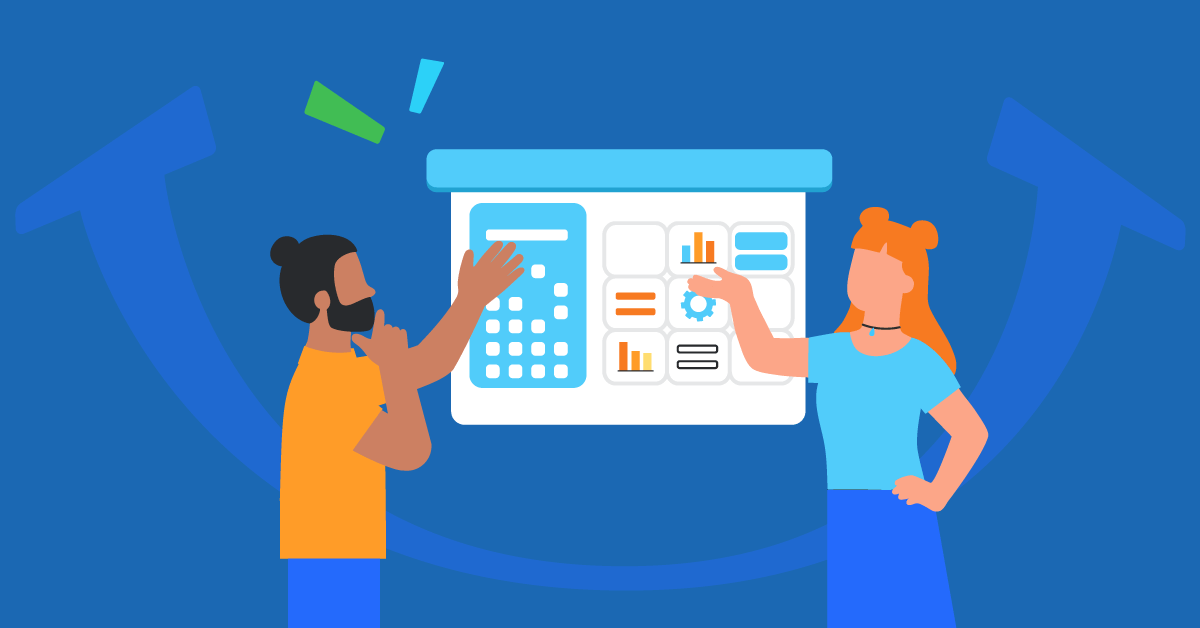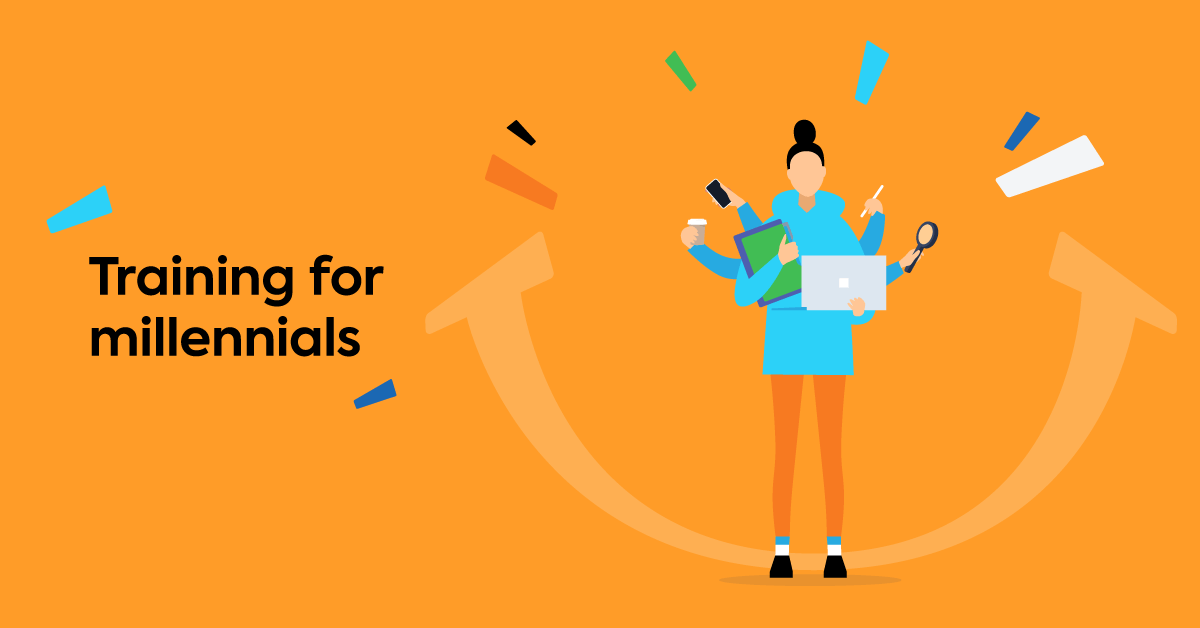Onboarding creates a foundation for the employee experience. Get it right, and you’ll reap the rewards. Get it wrong, and you’ll risk losing your new hire.
Unfortunately, according to ¹Gallup 88% of organizations do get onboarding wrong. The good news is, a new hire onboarding checklist can turn things around.
A new hire onboarding checklist is a detailed rundown of tasks and activities associated with the onboarding process. Including deadlines and time frames, it’s designed to guide employers and new hires through the onboarding process. And ensure all necessary steps are completed efficiently and consistently.
Yes, every business has its unique processes, systems, and culture. And your employee onboarding checklist needs to reflect this. But having a template to work from gives you a big head start.
In this article, we look at what makes a great new hire onboarding checklist. And provide a new hire onboarding checklist your HR professionals, hiring managers, and team leaders can use to manage each stage of the process. Just download, save, and use your employee onboarding template to onboard new hires.
First off, though, let’s pin down what we mean by onboarding and explore the rationale behind using a new hire onboarding checklist.
What is onboarding?
Onboarding sets the tone for the future relationship with your new hires. According to BambooHR, employees who had successful onboarding feel up to 18x more commitment to their workplace. Research from TalentLMS and BambooHR also reveals that 67% of Gen Z employees agree that onboarding made them feel welcome and valued in their new company.
In the same survey around onboarding, having an accurate definition of onboarding was the first important step in the process. To help us with this, we looked to one of the experts we partnered with on the project. Assistant Professor of Management and Human Resources at the California Polytechnic State University, Dr. Allison M. Ellis’s definition of onboarding was as follows:
“The process of assisting new hires in gaining a functional understanding of the skills and tasks required in their new role, helping them to develop new relationships with others in the workplace, and facilitating an understanding of the company culture and goals.”
So, how can a new hire onboarding checklist help with this aspirational goal?

TalentLibrary – Skills that matter, courses that deliver
With TalentLibrary, you set the foundation for a strong, aligned workforce—soft skills, compliance, and workplace essentials, from day one (and beyond).
Why is it important to use a new hire onboarding checklist? 12 key benefits
A new onboarding checklist can help with onboarding from the perspective of your new hire, your business, and your internal stakeholders. Here’s a breakdown of the benefits it brings.
1. Aids clarity
Onboarding isn’t a one-person job. It involves different people at different stages. Using an onboarding checklist, everyone knows what to do and when.
2. Provides consistency
Every new hire should receive the same level of attention and detail when they start a new job. A new hire onboarding checklist promotes a consistent onboarding experience for all employees. Plus, areas for improvement are easier to spot.
3. Delivers confidence
Not everyone involved in onboarding will be an expert in the process. Having a guide aids understanding, provides context, and helps all participants feel confident in their roles.
4. Instills calm
With a plan, onboarding has structure, pace, and precision. Considered and well-thought-through, it means you won’t end up rushing the process or causing unnecessary panic.
5. Guarantees compliance
A detailed ‘to-do’ list means you can be confident that essential tasks are completed. And that internal protocols and the legally required aspects of making a new hire have been covered.
6. Adds value
Effective onboarding is more than policies and paperwork, form filling, and cybersecurity training. It’s about creating engagement, understanding, and an emotional connection with your new hires. Providing an at-a-glance overview, a checklist can be used to run a temperature check on your onboarding program. Are there enough opportunities for new hires to learn about company culture, vision, mission, and values? Have you shared your employee handbook? Did you tick off everything on the new hire onboarding kit list? Using a new hire onboarding checklist, you can check the balance of content. And pinpoint any gaps.
7. Creates resilience
Transparency makes businesses and processes more resilient. With all stakeholders working with one detailed, centralized new hire onboarding checklist, everyone can see what needs doing and when. This means anyone in your HR team can step in and pick up the tasks at any stage.
8. Drives efficiencies
Transparency also makes businesses and processes more efficient. Eliminating duplication of work, an onboarding checklist ensures that nobody wastes time on tasks that have already been completed.
9. Minimizes mistakes
With assigned responsibilities, a clear timeline, and detailed tasks all recorded in a checklist, errors, omissions, and inaccuracies in the onboarding process are significantly reduced.
10. Generates a buzz
Onboarding extends beyond a new hire’s first week in the post. But with many key activities centered on the period leading up to this point, a new hire onboarding checklist also acts like a countdown. Sent in advance to new hires, it’s a great way to create a sense of pace, excitement around your company culture, and motivation internally and externally.
11. Offers reassurance
For a new employee, starting a new job can be daunting. Providing new hires with a comprehensive onboarding checklist reminds them that there’s a supportive process in place to help them achieve their best. And that there’s a comprehensive training program to guide them through any periods of uncertainty.
12. Elevates the experience
The combined effect of these positive outcomes (from consistency and balance to accuracy, enrichment, and support) is a better, more cohesive experience for your new hires.

A new hire onboarding checklist for each stage
Unlike new employee orientation, onboarding goes beyond a new hire’s first week. It starts with the crucial stage of preboarding, which is when most of your new hire’s impressions will be formed. And it goes to the end of the third month, when your new hire’s probationary period is likely to end. Our employee onboarding template underpins onboarding best practices and includes checklists for each stage. Customize them as you need to. Then save each new hire onboarding checklist using the new hire’s full name and start date.
Tip: There’s a column for remote workers on each new hire onboarding checklist template. This highlights where the process may differ for employees not based in the office. And provides tips on how to make alternative provisions.
New hire onboarding checklist: Preboarding
Between accepting a job offer and starting the job, a well-planned employee preboarding strategy is essential for new employees. During this time, you help new hires feel part of the team while maintaining enthusiasm, productivity, and longevity. A preboarding new hire checklist will give you a clear idea of which steps you need to follow.

Click here to download the full new hire onboarding checklist, including the preboarding checklist.
New hire onboarding checklist: Day one
The orientation (or induction) of your new hire begins the moment they start working for your company. And the first day at work is extremely important for a seamless new hire onboarding experience. It sets the tone for the rest of the onboarding process. And it gives newcomers an initial insight into your office culture, values, processes, and teams. With a new hire onboarding checklist, you can ensure you haven’t missed any crucial steps on this make-or-break day. And provide new employees with a reassuring structure to follow.

Click here to download the full new hire onboarding checklist, including the day one checklist.
New hire onboarding checklist: Week one
During onboarding, it’s important your new hire starts to feel committed to their new work environment. But this can be challenging and stressful while navigating a new workplace. A week one new hire onboarding checklist can be used to show your new hire they belong in your organization and keep them engaged. Some key steps in the first week are adding them to any relevant internal messaging groups, scheduling 1:1 sessions with management, and providing job expectations and a company roadmap.

Click here to download the full new hire onboarding checklist, including the week one checklist.
New hire onboarding checklist: First three months
During the first three months of the onboarding period, new employees learn as much as possible about their job responsibilities. But they also need to gain insight into the bigger picture. For example, your organization’s values, company culture, products, or services, your company’s team structure, and more. With a new hire onboarding checklist, you can gauge where you are after the three-month period is completed. For example, have your new hires completed their training and assimilated the knowledge they need to kickstart their new role?

Click here to download the full new hire onboarding checklist, including the first three months checklist.
New hire onboarding checklist: New hire paperwork
Whether it’s your employee handbook, tax forms, contracts, or confidentiality agreements, new hire paperwork is a fundamental part of any onboarding checklist. It underpins compliance with legal and organizational requirements. Plus, by organizing and prioritizing paperwork within the onboarding checklist, companies can avoid delays. And allow new hires to focus on more engaging aspects of their first days in post. A clear, efficient approach to paperwork also demonstrates professionalism and sets the tone for a well-structured onboarding experience and a smooth transition into your company.
Click here to download the full new hire onboarding checklist, including the new hire paperwork checklist.
Click here to download the full new hire onboarding checklist, including the new hire paperwork checklist.
How to use a new hire onboarding checklist
Producing a new hire onboarding checklist is one thing, putting it to good use is another. Here are a few things to consider when working out how to optimize your guide.
Access
Who needs access to your checklist? At the very least, all of those who have a stake in the onboarding process will need to be able to view and tick off items within the document. So, that means anyone with a task. And anyone with an active interest in the new hire and the outcome. In most instances, this will include:
- Your HR team
- Recruiters
- Hiring managers
- Team managers
- Training managers
- Departmental trainers in Facilities, IT, and Compliance
- Your new hire. (They won’t, of course, require the complete checklist–you want to support them through the process, not scare them off by it! But rather a paired-down version that lists everything they need to complete or tick off.)
Storage
For your checklist to work, there should only be one version for each new hire. This means saving it centrally in a location all your stakeholders can access. This could be in a shared drive, a Cloud storage site, a project management app, or inside your HRIS if you have one. Consider adding a password-protection feature if it’s saved somewhere unauthorized users could access it.
Of course, you can also save a sample template of your onboarding checklist on the HR section on your intranet. This gives all employees an idea of what onboarding involves and your company’s approach.
Tip: Create a standardized naming format for each checklist. For example, ‘[Employee name] onboarding checklist.’ This will make them easier to locate and track.
Ownership
Yes, different people will need access to your checklist. But most will only have a few isolated tasks to complete. And won’t feel any sense of overall responsibility. To make sure your checklist delivers what it sets out to do, someone needs to take ownership. In most cases, it will fall to one designated person or subsection of your HR team to monitor and manage the progress of tasks on the checklist. And to ensure that actions are completed on time and marked off on the list. But don’t take this for granted. So make sure responsibility is clearly assigned and communicated.
Customization
In most instances, the only information you’ll need to add to your onboarding checklist template will be the details of the new hire. So, that’s the employee name, staff number (if they have one), and start date.
But some tasks may not apply to all new hires. For example, remote employees or boomerang workers will need slightly different checklists. There may even be certain roles that demand enhanced onboarding. So it pays to review the list and add, remove, or amend actions as required. Plus, when it comes to paperwork, the location, industry, and nature of your business may impact the forms you need to provide or have your new hire complete. So check this section over to ensure it meets your needs.
Update
Gathering feedback through an onboarding survey is a vital step in refining the onboarding process and your new hire onboarding checklist. And, ultimately, ensuring a positive experience for new hires. Providing valuable insights into what worked well, it also highlights areas for improvement, so you can tailor your approach to better meet employee needs. Actively seeking input from new hires, demonstrates a commitment to listening and improving, which fosters trust and engagement. Additionally, onboarding surveys can reveal potential challenges or gaps early on. This enables HR teams to address them proactively and enhance retention and satisfaction rates among new employees.
Employee onboarding automation
If an onboarding new hire checklist is the backbone of an effective onboarding program, automation provides the legs and arms that keep everything moving forward. By leveraging onboarding software, training platforms, and AI-powered tools, businesses can streamline administrative tasks, personalize training experiences, and ensure new employees feel supported, well before they start on day one. To complement your new hire onboarding checklist, here are some ways to optimize the tools and technologies currently transforming onboarding.
Employee onboarding software
Modern onboarding software centralizes and automates key tasks such as document collection, compliance tracking, and communication workflows. These platforms provide a one-stop hub where new hires can complete paperwork, access training modules, and familiarize themselves with company policies.
Additionally, onboarding software often includes features for tracking progress, setting up reminders, and integrating with other HR tools. This allows HR teams to focus on more strategic activities while ensuring a seamless onboarding experience. Combined with structured training programs, these tools empower new hires to gain the skills and knowledge they need to succeed quickly and confidently.
Training platforms
Employee training platforms, also known as Learning Management Systems (LMSs), play a key role in supporting onboarding. And provide the perfect partner for modern onboarding checklists.
A good LMS will have its own onboarding training software to manage the process. It will create a centralized, digital environment where new hires can access essential training materials, complete interactive courses, and track their progress. It may even have AI functionality designed to help you create your own onboarding courses in minutes.
LMSs offer flexibility, allowing employees to learn at their own pace while ensuring consistency in training across the organization. Features like video tutorials, quizzes, and gamified learning modules make onboarding more engaging and effective. Additionally, LMSs can be customized to align with specific roles or industries, ensuring new hires receive targeted and relevant training.
From compliance and safety training to soft skills development, LMSs streamline the onboarding process, equipping new hires with the knowledge and confidence they need to succeed. By integrating an LMS into your onboarding checklist, you can create a scalable, efficient training program that sets the foundation for long-term employee growth.
Tip
An onboarding email template or series of onboarding templates can help streamline and standardize the training schedule and process for new hires. These templates can also ensure a better onboarding experience by setting standards for other emails sent out as part of the overall onboarding program. For example, a first-day welcome email from a line manager or a company announcement email introducing your new hire.
The role of AI in onboarding
Artificial intelligence is taking onboarding automation to the next level by personalizing and enhancing the employee experience. AI-powered chatbots can provide instant answers to new hire questions, guide them through complex processes, and send reminders for critical deadlines.
AI can also analyze data from previous onboarding cycles to identify areas for improvement, predict new hire needs, and tailor your new employee onboarding checklist and onboarding content based on individual roles or learning preferences. For example, an AI system might recommend specific training resources or schedule check-ins with managers based on a new hire’s progress and engagement levels.
By reducing manual effort and offering intelligent support, AI enables companies to deliver a faster, more tailored onboarding experience while fostering long-term employee satisfaction and retention.
To infinity and beyond: The lifecycle of a new hire onboarding checklist
The message around why onboarding matters is clear. Creating and delivering an effective new hire experience results in a good ROI. It sets new employees (and your business) up for success. It creates strong and positive memories. And it delivers an excellent first impression that lasts well into a new hire’s tenure. Plus, it’s easier to manage and perfect with the right resources. Which is where your onboarding checklist for new hires comes in. Using free new hire onboarding checklists and templates, combined with easy-to-use onboarding training software and ongoing advances in generative tech, you can turbo-boost your process–whatever the size and scale of your operation.
But remember, the work doesn’t end there. It’s important to evaluate how successful onboarding has been and make changes based on the onboarding feedback you receive. And keep an eye on emerging onboarding trends.
That way, the experience you offer throughout the employee onboarding process will keep getting better. Which, after all we’ve learned about onboarding, will definitely be time well spent.
¹Gallup. (n.d.) Why the Onboarding Experience Is Key for Retention. Retrieved from https://www.gallup.com/workplace/235121/why-onboarding-experience-key-retention.aspx
Originally published on: 22 May 2023 | Tags: Employee Training,Online Employee Onboarding




![Etiquette Training: 12 Rules For Crafting Professional Emails [+Free Guide]](https://images.www.talentlms.com/blog/wp-content/uploads/2023/03/TLMS_20230228_1200x628.png)